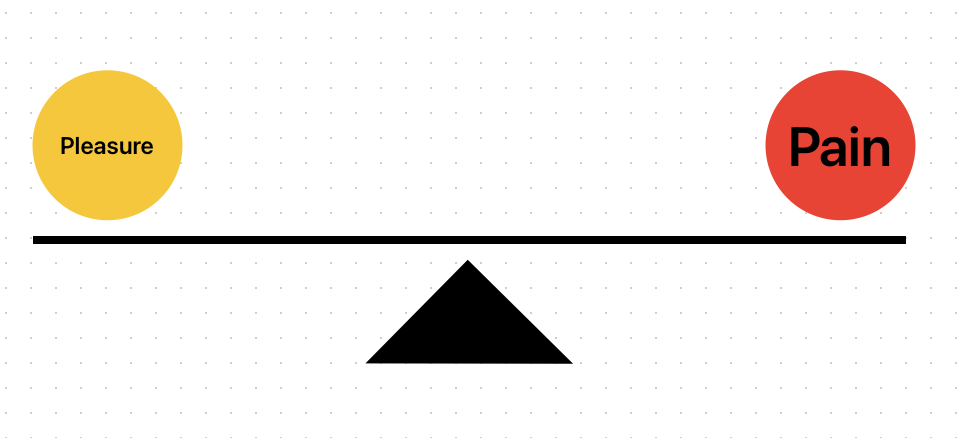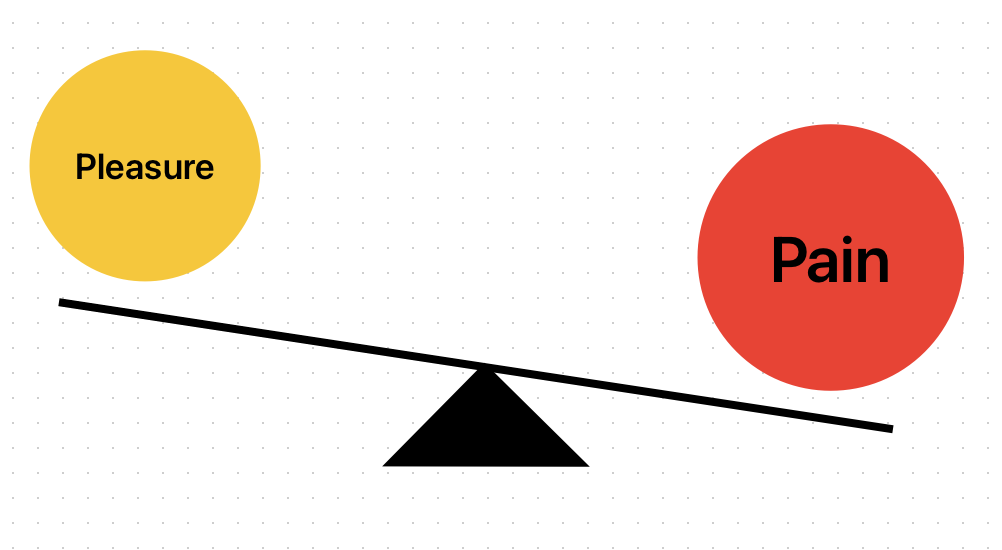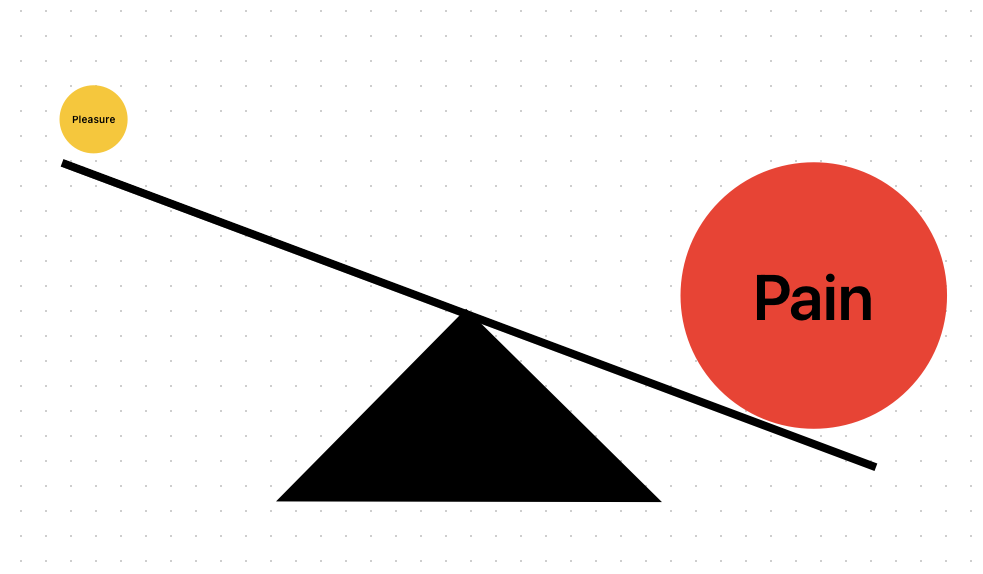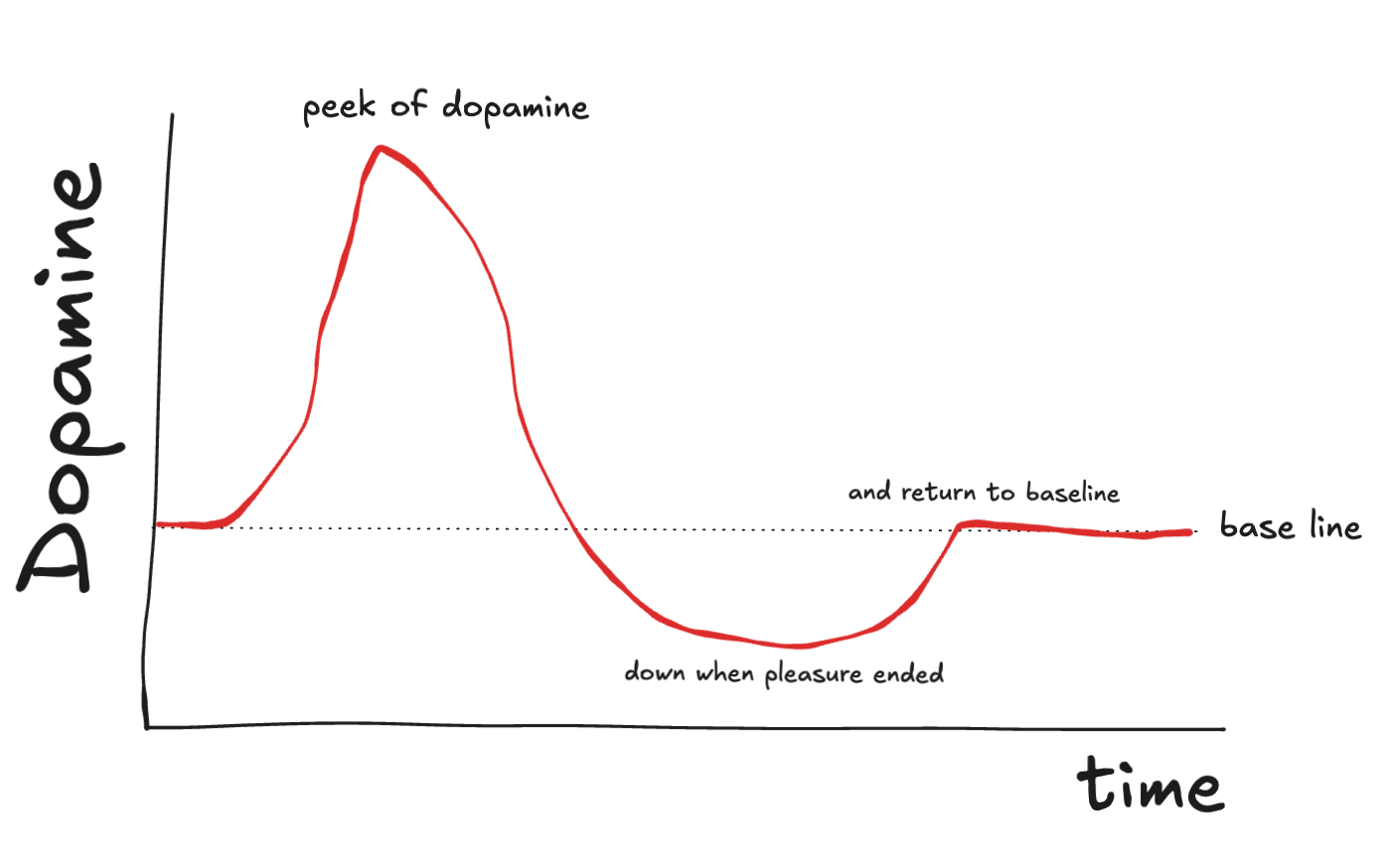
The one and only way for you to be healthy and happy for the rest of your life
Why Are We So Miserable These Days?
In 2025, we are living in the most abundant era in human history. Food we want to eat is delivered to our doorstep with a single click, a flood of content from all over the world pours out from the small screen in our hands, and the desire for new experiences and possessions is no longer an unquenchable thirst. Compared to the time when our ancestors, Homo sapiens, had to hunt and gather every day for survival, we are clearly living blessed lives.
However, strangely, in this abundant world, many modern people are struggling with a deep sense of emptiness and pain. This is true even for those who can get almost everything they want and seem to live a satisfying life to others. Why do we get farther away from happiness the more we pursue endless fun and pleasure?
In her book "Dopamine Nation," psychiatrist Dr. Anna Lembke finds the cause of this paradox in dopamine. We often call dopamine the 'happiness hormone' and think of it as a substance that brings us pleasure. But Dr. Lembke says the true role of dopamine is not pleasure itself, but the desire and motivation for pleasure.
Today, I want to reveal the true nature of dopamine and pleasure, and easily explain why the more we pursue pleasure, the farther we get from pain, how to find truly 'healthy' happiness, and what the way is to be happy for a lifetime. If you understand and practice the method to truly be happy through this article today, you can at least be free from stress about happiness in the future.
Your Brain Has a Seesaw
First, let's understand why we are so miserable the more we pursue pleasure and where this painful feeling comes from. To explain it simply, I'll use the seesaw analogy that was also used in the original text of "Dopamine Nation."

Imagine there's a seesaw in our brain. On one side, a friend named 'Pleasure' is sitting, and on the other side, a friend named 'Pain' is sitting.
At first, these two friends, Pleasure and Pain, have the same weight. Also, Pleasure and Pain have a property called 'homeostasis,' which means they always try to balance each other's weight.
But let's assume this seesaw can tilt to one side in the following situations:
- When 'Pleasure' is heavier than 'Pain'
- When 'Pain' is heavier than 'Pleasure'
In these two situations, the seesaw tilts to one side. The special thing here is that Pleasure returns to its original weight quickly even if it gets heavier, but it takes a little longer for Pain to return to its original weight even if its weight increases.
Anyway, let's increase Pleasure's weight to examine the situation. The foods that our friend 'Pleasure' loves are things like YouTube Shorts, Instagram Reels, social media notifications, success, food, games, and pornography, etc. We're going to feed these foods that 'Pleasure' loves to Pleasure to increase its weight.

We can see the seesaw has tilted to one side as Pleasure's weight has increased. But as mentioned above, since the friends Pain and Pleasure have homeostasis, Pain will also increase its weight to match Pleasure's.

But something bad happened. While Pain was matching Pleasure's weight, the food Pleasure had eaten was digested, causing the seesaw to now tilt towards Pain. At this point, we make one of two choices.
- Wait until the food Pleasure ate is digested and its weight returns to normal.
- Eat the foods Pleasure loves again (YouTube Shorts, Instagram Reels, etc.) to tilt the seesaw back towards Pleasure.
We have these two options. If we choose option 1, the seesaw will soon return to normal. But what happens if we choose option 2? Pain will once again increase its weight to balance the seesaw. But there's a problem here. The friend 'Pleasure' needs to eat an increasing amount of food to gain weight. In other words, to balance the seesaw that has tilted towards Pain, we have to eat a greater amount of food (YouTube Shorts, Instagram Reels, etc.). So, if we choose the second option, this vicious cycle will repeat.
Eventually, the seesaw will look like this:

The Secret of Dopamine
The seesaw analogy I just used is actually the law of dopamine's 'homeostasis.' I'll explain the example in more detail.

This is a graph of dopamine's homeostasis. It shows the change in dopamine secretion over time after a high-dopamine activity, and the time it takes for dopamine to return to its original low level.
As you can see from the graph, initially, when we do an activity that releases dopamine (which is usually a pleasure-seeking activity), dopamine is secreted in a much larger amount than usual. However, after our pleasure-seeking activity ends, dopamine does not immediately return to its usual level. Instead, it stays in a lower-than-usual state for a certain period. This is the point where our brain detects something is off. The activities we used to enjoy seem boring, meaningless, and even dull. But this is just a temporary state because the dopamine level has not returned to a normal state yet.
Therefore, we must endure this period. This is why we want to seek pleasure again after we've already had a dose of dopamine. This is the first secret of dopamine. Dopamine does not return us safely to our original state. It makes us endure a certain amount of pain to get back to normal.
Furthermore, this dopamine release is at an even higher level for more stimulating pleasures. Drugs, cigarettes (nicotine), sex, and sweet foods are particularly high in dopamine release.
I'll show you what happens with a graph if we can't endure this period and keep pursuing dopamine.

Isn't that scary? This is the second secret of dopamine. Dopamine never provides the same amount of dopamine as we experienced before. The first time we encounter a pleasure, dopamine is secreted at a very high level. But it's not the same afterward. Dopamine reacts to the same amount of pleasure with a smaller amount of dopamine, and when the pleasure ends, the dopamine decrease is even greater than before. As this vicious cycle repeats, the graph gradually trends downward. This is why many addicts (to drugs, alcohol, gambling, games, porn, etc.) want a higher intensity of pleasure than before.
These dopamine addicts eventually fall into a state of chronic dopamine deficiency. This is the secret of dopamine.
How to Regain 'Healthy' Happiness: Putting the Seesaw Back in Balance
So, I think you've already figured out what 'healthy' happiness, the title of this article, means. The 'healthy' happiness I'm talking about is the state where Pleasure and Pain maintain the seesaw with an appropriate amount of pleasure. But if it were as easy as it sounds, so many people wouldn't have fallen into addiction and tilted the seesaw. So how can we put the seesaw back in place and not fall into the temptation of pleasure and return to our original state? Excellent researchers and Dr. Anna Lembke have already shared the answers with us. Now, all we have to do is follow these answers to regain 'healthy' happiness and keep the seesaw in balance.
First, there is a principle we need to know. If you are a dopamine addict, it takes at least 4 weeks of effort for your dopamine to start returning to its original state (baseline). However, this is an average, and it can vary from person to person and depend on how much the dopamine level has decreased. So, if you want to straighten the seesaw, you have to be ready to put in a long period of effort.
How to Straighten the Seesaw
The method to straighten the seesaw is very simple. Every time you do one of the following three things, the seesaw will slowly return to its original state.
Quit, maintain, and seek pain.
First is to quit. This literally means to quit the sources of pleasure that gave us dopamine. If you quit the sources of pleasure, the graph I showed you in the previous chapter will no longer trend downward. This is because the increase in dopamine secretion will be minimal. But this takes a lot of time. As I said in the first principle, it requires at least 4 weeks of effort.
Second, is to maintain. If your dopamine has returned to its original state through the first step, you now need to maintain that state. Pleasure has a memory, and if the same situation or environment related to the source we were addicted to occurs again, we will seek dopamine once more. This is why many drug addicts relapse after recovery. Therefore, we must make an effort to keep this dopamine at a normal level (baseline). We can do this by building an environment and setting rules.
Third, is to seek pain. As I mentioned earlier, the dopamine seesaw has 'homeostasis.' So if we intentionally increase the weight of pain, the weight of pleasure will no longer increase. Instead, the weight of pleasure will increase. And since the weight of pain increased first, the time of pain that exists in the Pleasure → Pain cycle will not exist. Typical activities that seek pain are exercise, cold showers, and meditation. However, too stimulating a pain is also not good. Too stimulating a pain brings us a large amount of pleasure. And the next time we experience pain, we won't feel the same amount of pleasure. Self-harm is an example of a stimulating pain. We should avoid such things.
Conclusion
Ultimately, the reason so many modern people feel pain while pursuing pleasure was not unnatural, but a natural function of our hormone, dopamine. In fact, studies show that as the sources of pleasure increase day by day, the happiness level of many modern people has decreased, and the incidence of depression has increased.
But now we have learned how to regain 'healthy' happiness and maintain it for a lifetime. We've realized the correlation between pleasure and pain, and if you put it into practice, I believe you can truly get the happiness you so desire. I'll be rooting for your happiness :)
Additionally, most of the content in this article is based on the book "Dopamine Nation" by psychiatrist Dr. Anna Lembke. If you want to get more information about this topic and gain insight from actual experiments and Dr. Anna Lembke, I recommend you read Dopamine Nation.
Concluding the Article
In fact, I, the author of this post, have known about this content for about three years, and although I always said I'd change, I never actually did. It would be a lie to say I gave my best effort, but I still kept trying to put this into practice. But what I felt every time I failed was that there are just so many of these sources of pleasure in the time we are living in. The social atmosphere, to begin with, doesn't take these pleasures seriously, and many modern industries are generating massive amounts of capital through them.
Therefore, if you can truly be the person who breaks free from dopamine addiction and balances your happiness seesaw, based on Dr. Anna Lembke's advice, in the generation we live in, I think it will be a tremendous potential for you. I guarantee that you will be able to achieve more in your life and live a better quality of life. In fact, I sometimes feel that way myself.
Although I have failed for three years, as of today (August 22, 2025), I am truly trying to break free from my life as a dopamine addict. The reason I've made up my mind again today is that the very existence of pleasure itself now feels like pain to me. If you are aware of the mechanism that pain follows pleasure, it seems that pleasure no longer looks like pleasure. I realized that today, and pleasure no longer feels so appealing to me. Instead, I see pain as pleasure, and I believe that if I endure the pain, I will be rewarded someday.
Now, truly to conclude, I hope you will join me in breaking free from the life of a dopamine addict starting today. Thank you for reading this article, and I pray that 'healthy' happiness finds its way into your life 🙂
References
Why Does Living as I Please Feel Like Suffering? | The Paradox of Happiness | Neuroscience - Jisik is Knowledge Youtube
If you want to improve your life, have to choose pain? [The Science of Pain] - @CuriousBrainLab Youtube
There is a price for pleasure: pain... 4 ways to escape dopamine addiction | Motivation | Self-improvement | Anna Lembke - @Reform_Human Youtube
The first step in addiction treatment, according to addiction treatment expert Anna Lembke | #GreatLectures - EBS Youtube